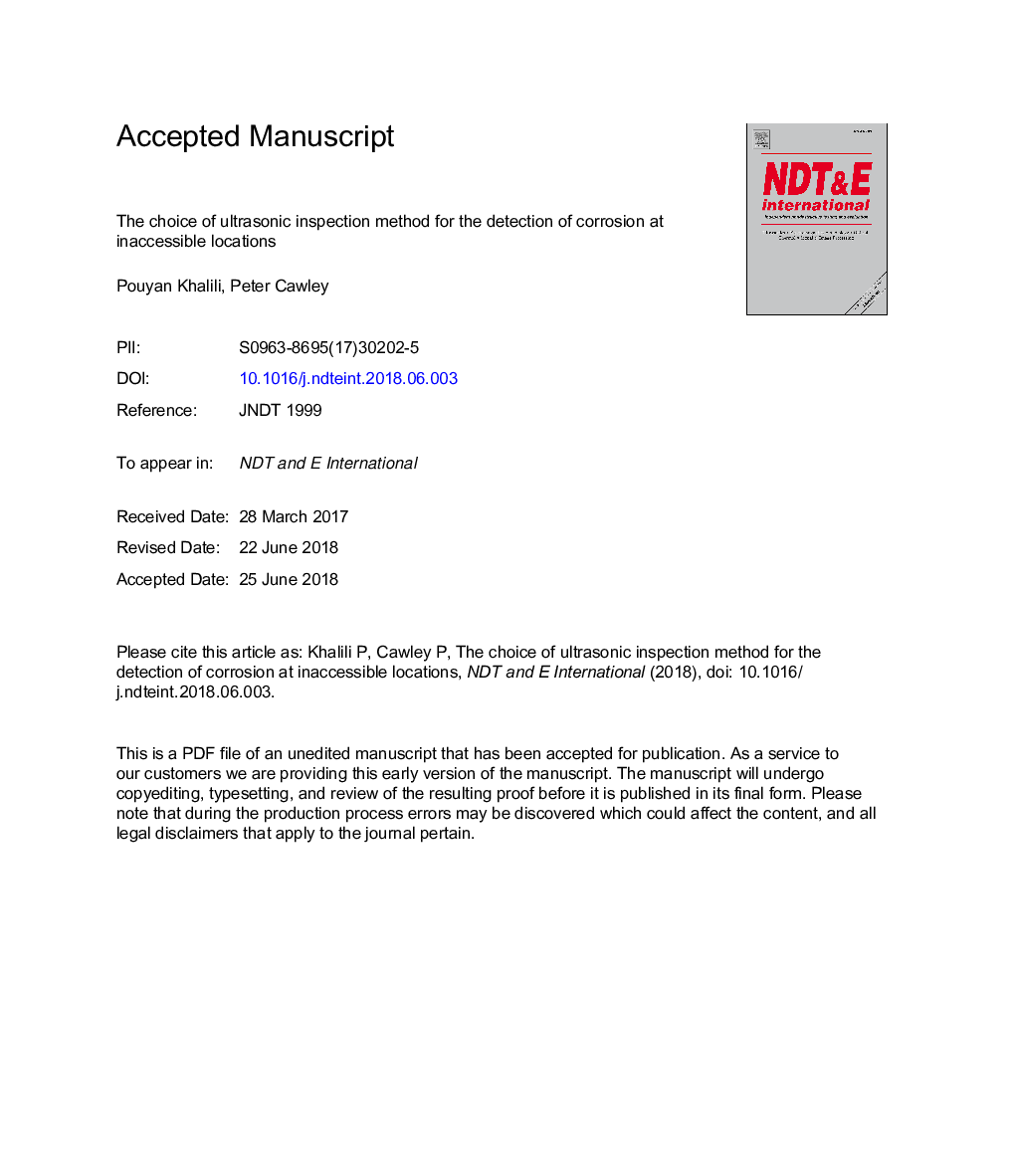| کد مقاله | کد نشریه | سال انتشار | مقاله انگلیسی | نسخه تمام متن |
|---|---|---|---|---|
| 6758181 | 1431262 | 2018 | 38 صفحه PDF | دانلود رایگان |
عنوان انگلیسی مقاله ISI
The choice of ultrasonic inspection method for the detection of corrosion at inaccessible locations
ترجمه فارسی عنوان
انتخاب روش بازرسی اولتراسونیک برای تشخیص خوردگی در مکان های غیر قابل دسترس
دانلود مقاله + سفارش ترجمه
دانلود مقاله ISI انگلیسی
رایگان برای ایرانیان
کلمات کلیدی
خوردگی، موج هدایت، سونوگرافی، مکان های غیر قابل دسترس حساسیت نقص،
موضوعات مرتبط
مهندسی و علوم پایه
سایر رشته های مهندسی
مهندسی عمران و سازه
چکیده انگلیسی
Inspection for corrosion and pitting defects in the petrochemical industry is vital and forms a significant fraction of the operating expenditure. Low frequency guided wave inspection is frequently employed as it gives large area coverage from a single transducer position. However, detection becomes problematic at inaccessible regions such as pipe supports or beyond T-joints since the low frequency guided waves produce a significant reflection from the feature itself, hence limiting the defect detectability of the method. This suggests testing at higher frequencies which helps to minimise the reflection from the feature and also improves the sensitivity to smaller defects. There are a number of guided wave and related techniques implemented for corrosion inspection including the S0 mode (atâ¯â¼â¯1â¯MHz-mm), SH0 and SH1 modes (atâ¯â¼â¯3â¯MHz-mm), CHIME, M-skip and Higher Order Mode Cluster (A1 mode atâ¯â¼â¯18â¯MHz-mm). This paper presents a systematic analysis of the defect detection performance of each method with sharp and gradual defects, as well as their sensitivity to attenuative coatings, liquid loading, surface roughness and ability to test beyond features such as T-joints. It is shown by finite element analysis backed up by experiments that the A1 mode provides the best overall performance when dealing with surface features such as T-joints and coatings because of its low surface motion. Additionally a combination of two or more methods is suggested for corrosion inspection at inaccessible locations: The A1 mode in reflection for severe, sharp, pitting type defects; long range guided waves in reflection for large-area thinning and the SH1 mode in transmission for shallow, gradual defects.
ناشر
Database: Elsevier - ScienceDirect (ساینس دایرکت)
Journal: NDT & E International - Volume 99, October 2018, Pages 80-92
Journal: NDT & E International - Volume 99, October 2018, Pages 80-92
نویسندگان
Pouyan Khalili, Peter Cawley,
